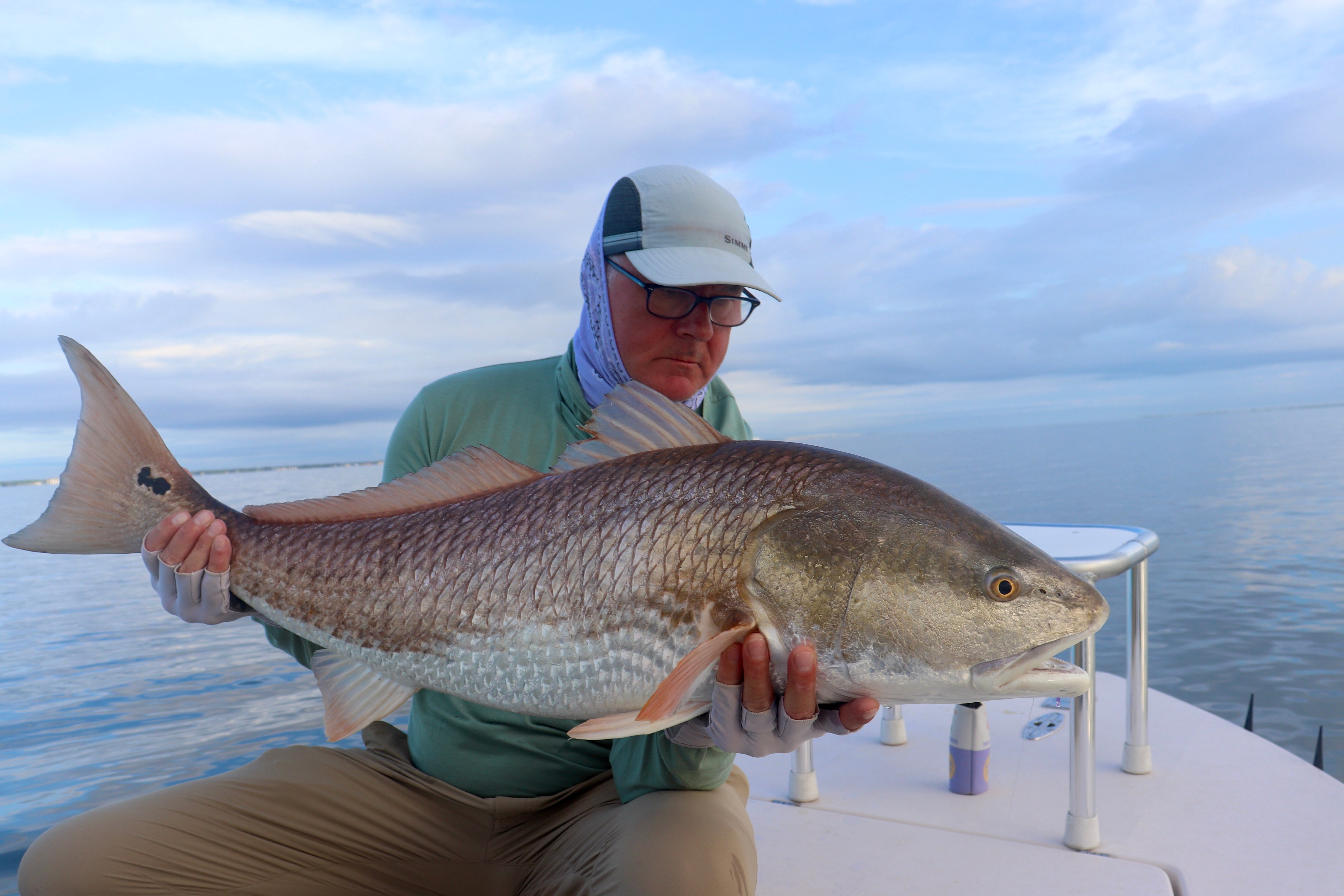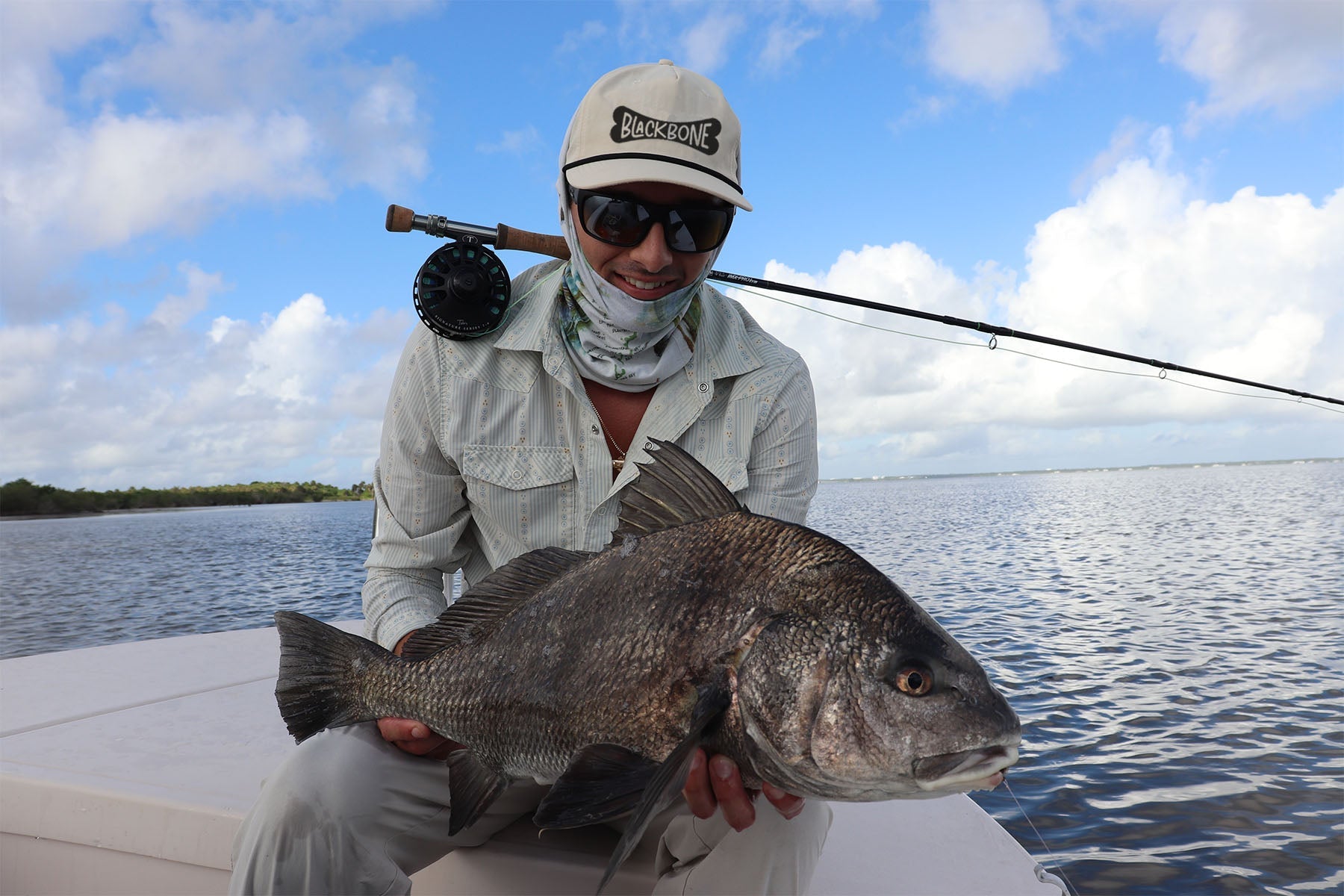Article: Cracking the Code | How to Flats Fish on a Full Moon

Cracking the Code | How to Flats Fish on a Full Moon
Flats fishing on a full moon is one of those paradoxical challenges that every angler eventually faces. It can be maddeningly tough, yet when approached with patience and the right tactics, it can reward you with the kind of day you’ll remember for a lifetime. Under the glow of a full moon, fish often feed heavily at night, which can translate to lethargic, disinterested behavior during daylight hours. This forces you to fish smarter, not harder — to observe, adjust, and coax bites out of fish that seemingly have no reason to eat.
This past weekend, I was faced with this exact scenario. The moon was full, the winds were subtle, and the odds were stacked against us. But by leaning into the nuances of moon-phase behavior, making a few crucial tactical adjustments, and staying patient, we managed to put together an unforgettable day on the flats. Here’s how it all came together — and what you can do to find success when the full moon tries to shut the bite down.
The Challenge of Full Moon Fishing
Ask any experienced flats angler, and they’ll tell you: full moons can be brutal. The reason is simple — under that bright moonlight, predatory fish often feed all night long. When dawn breaks, they’re already full. Instead of actively hunting, they cruise lazily or tuck tight to structure, conserving energy until their next big feeding window.
This behavior creates a double challenge. First, fish are less likely to chase aggressively during the day. Second, because they’ve already fed heavily, they can be spooky and wary of unnatural presentations. Combine that with still, clear water often seen around full moons, and you’ve got the perfect recipe for finicky fish.
But that doesn’t mean they’re uncatchable. It just means you have to change your approach.
Our Full Moon Flats Adventure
Going into the weekend, I knew conditions would be tough. The forecast called for light wind, overcast skies, and ultra-clean water — and the full moon had lit up the flats like a spotlight all night long. Instead of charging out blindly, we slowed everything down and focused on what full-moon fish do want: low-energy meals, stealthy approaches, and plenty of structure.
A Morning to Remember
At first light, we eased quietly across a glassy flat, poling slowly to avoid pushing any fish off early. It didn’t take long before we found a mixed school of black drum and redfish lazily milling across a pothole. The fish weren’t actively feeding, but their body language showed they were still catchable — slow, deliberate movements and relaxed postures, not spooked or bolting.
We downsized to small flies, aiming for precise, soft presentations. After a few tense casts, we came tight on a brute: a 41-inch Florida redfish sight-fished from the edge of the drum school. It was a perfect confirmation of what we suspected — even when full, these fish will still eat if you put the right offering in the right place.
That bite set the tone for the day.
Working the Shorelines
As the sun rose higher, we shifted our attention to the mangrove shorelines. This is a critical adjustment on full moon days: after feeding all night, fish often slide tight to structure to rest. Fallen timber, undercut mangrove roots, and shaded troughs all became our targets.
We took our time dissecting each stretch, placing small flies inches from the structure, letting them glide naturally on slow retrieves. That patience paid off. Redfish were stacked tight to the cover, and snook were ambushing quietly from the shadows. By reading their positioning and keeping our presentations subtle, we were able to pick fish off one by one without blowing out the entire shoreline.
An Afternoon Tarpon Bonanza
By afternoon, the wind had started picking up and the clouds broke just enough to light up the flats. We pulled into a shoreline in the lee, and it was loaded — dozens of juvenile tarpon accompanied by snook and redfish cruising in the slick calm.
Switching to ultra-small tarpon flies, we started feeding tarpon on nearly every cast. Their acrobatics lit up the day and capped off what turned out to be one of the most memorable full-moon sessions I’ve ever had.
The common threads were clear: small presentations, stealthy approaches, structure-focused strategy, and the patience to let the fish dictate the pace. Those principles are the foundation of full-moon flats success.
Key Tactics for Flats Fishing on a Full Moon
If you want to find success during a full moon, it’s all about understanding how fish behavior shifts and how you can adapt your tactics to match. Below are the main strategies that made the difference for us and can do the same for you.
1. Start Early and End Late
The single most important thing you can do on a full moon is be on the water early. Fish are most likely to feed again at first light, before the sun climbs high and the water warms. This window can be short, but it’s often your best shot.
Early on, watch closely how fish are behaving. Are they cruising actively, tailing, or laid up? Their morning behavior will often tell you how they’ll act the rest of the day.
If you can, also fish the last light in the evening. As the sun dips, fish often shake off their daytime lethargy and prepare to feed again. Dawn and dusk are your prime feeding windows on a full moon cycle.
2. Focus on Shorelines and Structure
Once the sun gets up, you’ll notice fish aren’t roaming open flats much. Instead, they tuck tight to structure: mangrove shorelines, fallen timber, oyster bars, dock pilings, or any shaded edges they can find.
This behavior reflects their post-feeding lethargy. They want safety, shade, and minimal effort. Targeting these zones is critical — blind casting across open sand or grass is rarely productive on full moon days.
Approach quietly and pole slowly, making deliberate casts close to cover. Be patient and thorough. Often, you’ll get only one shot at each fish.
3. Downsize Your Flies and Lures
One of the biggest mistakes anglers make during a full moon is using large, aggressive presentations. These fish aren’t actively hunting — they’re full. You’re not trying to feed a hungry fish; you’re trying to provoke an instinctual reaction.
That means going small and subtle. Tiny flies, light jigs, small soft plastics — things that slip into the strike zone without fanfare. The key is accuracy and stealth. Lead the fish by several feet so your offering can swim naturally into their path.
If they’re not responding, go even smaller. It’s amazing how often a downsized fly will draw a bite when nothing else will.
4. Prioritize Stealth and Precision
On a full moon, the fish are wary and the water is often clear. Noise, sloppy casts, and heavy landings will blow your shot instantly.
Pole slowly, keep your distance, and focus on soft, accurate presentations. Think of it like hunting — you want to slip the bait into their field of view without alarming them, then let their instincts take over.
Work your bait or fly slower than usual. Give the fish plenty of time to react, and resist the urge to rip it past them. On full moon days, subtlety beats aggression every time.
5. Be Adaptive With Color
When bites get tough, color can make all the difference. On full moon days, I like to start dark in the morning — black, purple, dark olive — for contrast in low light. As the sun rises, I gradually switch to more natural, realistic hues like tan, olive, or silver.
If you get refusals or follows without strikes, change colors immediately. Don’t get stubborn. The fish are telling you something, and color can be the simplest fix.
6. Slow Down and Observe Patterns
Lastly — and maybe most importantly — slow down. Full moon fishing is not about covering water. It’s about dissecting small zones, watching how fish behave, and letting the day’s pattern reveal itself.
Don’t expect instant gratification. Take your time, be patient, and let the fish come to you. Watch how they move: are they sliding along edges, holding in potholes, tailing in grass? Every clue can help you predict their next move and make your next shot count.
Final Thoughts: Embrace the Challenge
Fishing the flats on a full moon isn’t supposed to be easy. That’s what makes it so rewarding. It forces you to slow down, fish smarter, and appreciate every bite.
This past weekend, by embracing that mindset, we turned a tough full moon into one of the best days of the season. From sight-casting a 41-inch redfish in clean water to watching juvenile tarpon light up the surface in the afternoon, it all came down to small presentations, clean water, and reading the fish.
If you find yourself staring down a full moon and wondering if it’s worth launching the skiff — go. But go early. Go quiet. Go small. And go with an open mind.
Because when it all comes together, flats fishing under a full moon can be nothing short of magic.
-
full moon flats fishing
-
how to fish flats during full moon
-
best flies for redfish full moon
-
full moon fishing tactics
-
fishing structure on full moon
-
stealthy presentations for spooky fish
-
small fly presentations flats fishing
